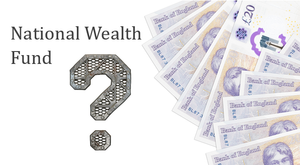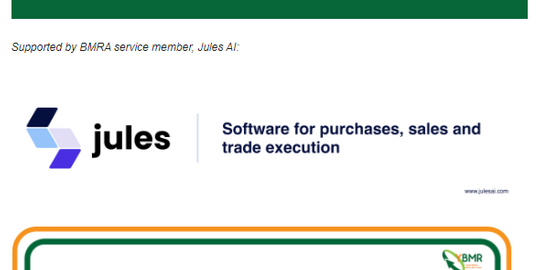Green steel among five keys areas identified

An opinion piece by BMRA’s Policy and Public Affairs Executive, Cameron Leitch
Last week, the Chancellor of the Exchequer, Rachel Reeves launched Government’s multi-billion-pound National Wealth Fund (NWF) as part of Labour’s package to ‘boost growth’ and ‘unlock investment’.
With its proposed £7.3bn of public capital, the NWF provides an opportunity for significant public-private partnership investment into priority areas for net zero.
Advising the Labour Party on how to design and implement the NWF is the NWF Taskforce, which includes CEOs from institutions such as Legal & General, Aviva, Natwest and The Green Finance Institute.
Aligning with Government’s announcement, the NWF Taskforce published its Interim Sector Analysis which identified five areas the NWF could support: green steel, green hydrogen, industrial decarbonisation, gigafactories and ports.
Importantly for UK metal recyclers, the report outlines that in order to roll out the production of green steel, £1.2bn-£2.3bn of investment is estimated to be needed in scrap facilities.
It is great to see UK metals recycling industry’s role in the production of ‘green steels’ acknowledged. Future investment is particularly exciting as UK metal recyclers already support the production of UK green steels for reinforcing bar.
However, I am somewhat sceptical towards the evidence base NWF Taskforce used for their analysis.
The NWF Taskforce identify that one of the barriers to the deployment of green steels is ‘recycling capabilities’. Citing a UK Steel report, they argue “productivity and product ranges for EAFs in the UK are limited by a lack of high-quality steel scrap as a recycling feedstock. The UK currently exports approximately 77% of its scrap steel.”
However, a short consultation with many of the technical experts across the UK metals recycling industry would find the UK exports 77% of its scrap steel because it currently only demands 23% of domestic arisings. This is because up until now, the production of UK steel has been overwhelmingly predicated on the more polluting blast furnace – basic oxygen furnace steelmaking method, which only requires scrap steel for temperate control.
Conversely, countries which produce steel via the electric arc furnace method are often big consumers of scrap steel. Looking at 2024’s export data to date, Turkey, Spain and Portugal are three of the six biggest importers of UK steel scrap (Source: ISSB). Combined these three countries have 45 steel plants, of which 39 are electric arc furnaces (Source: Global Energy Monitor).
The NWF Taskforce also argue that the Export Packaging Recovery Note (ePRN) currently incentivises recyclers to export ‘rather than investing in reprocessing equipment for the UK market’. Yet the volume of steel packaging forecast to be placed on the market this year is somewhere between 550k-551k (Source: WRAP), which represents around 5% of overall steel scrap arisings in the UK (10.5mt).
The report appears to ignore that innovations to deliver green steels are happening today. There are private talks between metal recyclers and steelworks. There are also public projects such as RECTIFI, where partners, including EMR are investing over £10m to create an innovative new supply chain for high-grade recycled steel.
There is no doubt that £1.2bn-£2.3bn of investment, if unlocked, will help to ensure scrap facilities can meet future demand for green steels. There is a risk, however, that this deficient evidence base which has been used to advise Government could mean this investment is earmarked for vertical integration rather than increasing the existing UK metals recycling industry’s capacity to deliver raw materials for green steels.


